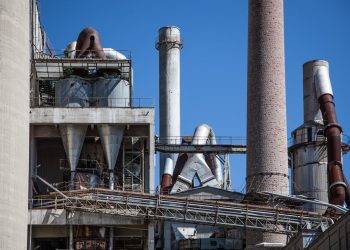As the Federal State Statistics Service of Russia has revealed, Russian firms’ net profit fell by 8.5% in 2017 compared to 2016. Last year’s GDP growth rate was just 1%, which surprised many considering the country’s general economic trend.
Overall, it’s apparent that specific sectors of the Russian economy have done exceptionally well. The weak RUB significantly impacted most exporters, with extractive sectors taking the top spot. The aggregate net profit of these industries grew by 17.9 percent. Despite Russia’s booming extractive industries, the coal industry stood out as a remarkable success story. According to the data, Russia’s coal mining and allied businesses grew by 68% year-over-year.
For the first time, Russian coal exports totaled $13.5 billion in 2013. Since Russia was founded, there have been more people in the country than ever before. Rail and port capacity expansion in Europe and Asia has resulted in a rise in Russian coal exports. Imports of coal from the European and Asian continents are in high demand. Russia has overtaken Indonesia and Australia as the world’s third-largest coal exporter because of its rapid expansion. News of kannada
A lack of coal is threatening Beijing, China’s capital city.
As a result of the increased demand for coal, prices have risen. From USD50/ton to USD100/ton since the beginning of 2016. The recent adjustments made in China, for example, have had a considerable influence. China’s government has prioritized reducing coal consumption and increasing clean energy to minimize air pollution and modernize the country’s energy system, which is dominated by fossil fuels.
Since 2016, China’s coal sector has been the driving force behind essential reforms. This has led to the closure of thousands of small and primarily inefficient coal enterprises across the country.
The country’s total installed coal-fired power capacity is thetotal predicted to remain below 1,100 GW by the end of this decade, and coal-fired power capacity is expected to be removed or suspended. Decommissioning or suspending 50 GW in 2017 was exceeded by 15 GW, according to a statement from the State Council (65 GW in total). However, coal continued to be China’s principal energy source in 2017, accounting for slightly more than 60% of overall energy consumption.
In China, the amount of coal consumed has continuously fallen since 2013. 2017 was an outlier in this trend, as reported by the Financial Times, with inflation rising by only 0.4%. According to the Financial Times, the surprising spike in Chinese coal usage was caused by a 5,7% year-on-year increase in electricity demand. An acceleration in heavy construction work was blamed for this spike related to the upcoming national convention in October 2017. There was a 40% drop in hydropower production last year, sufficient to meet electricity demand for the past few years.
Exchanging importers is possible.
Coal imports were necessitated by China’s lack of domestic mining capacity, which was previously mentioned. China’s surprisingly high coal consumption benefited Russia, Mongolia, and Australia immensely. China’s General Administration of Customs reported a 36.3 percent increase in Russian customs entries in 2017 to 25.3 million metric tons. The comparable numbers for Mongolia and Australia were 27.6 percent and 13.4 percent, respectively.
Besides China’s rising demand, the three countries gained substantially from China’s embargo on North Korean coal shipments in February. In 2016, China bought more than 20 million tons of coal from North Korea, placing the country behind only Australia, Indonesia, and Mongolia as coal suppliers. After the ban went into place, North Korea quickly lost its advantage.
“Russia took up the majority of suddenly accessible market share,” says China National Coal Association analyst Cheng Gong because mining costs in Russia are lower than in China’s northeast region.
It is estimated that in 2016, Russia’s five biggest coal producers contributed 78% of the country’s total coal output (223.3 million metric tons). All in all, 171.4 million tons of coal were exported. In contrast, exports to China accounted for barely 11% of overall revenues. Evraz, a London-based steel and mining corporation with activities across the world, especially in the Far East, is an excellent example of a significant energy company that is focused on those markets. Mechel, a prominent Russian coal exporter, transfers around 30 percent of its coal to China.
There has been an increase in exporting to China, which has resulted in the price of the product that is so abundant in Russian soil rising significantly. Energy giant Evraz had its share value more than quadrupled in the last year, continuing a steady increase that shows no indication of slowing. Since 2016, Mechel’s stock has tripled in value.








